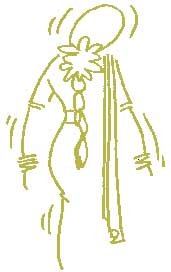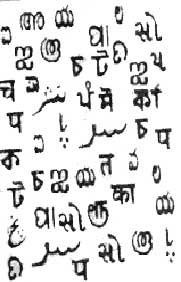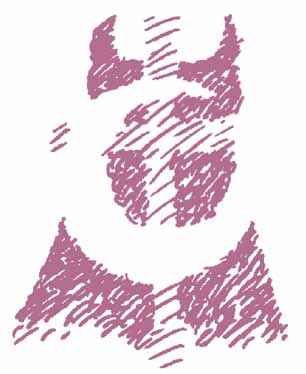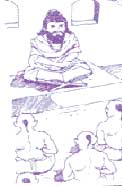CASTE SYSTEM
In India, the caste system developed and is prevalent since ancient times and it remains as a great thorn and mystery in the flesh of Mother India. It is believed to have been adopted by the Brahmins to express their superiority and to maintain it. Then the Aryan races swept into India from the North and they wanted them to be superior to the insiders and so they maintained the prevalent caste systems. Gradually the caste system became formalized into four major groups, each with its own rules and regulations and code of conduct.
At the top rung of the caste ladder in India comes the Brahmins who have maintained themselves as priests and arbiters regarding religious and financial problems. Then come the Kshatriyas or the Soldiers and administrators. They are followed by the Vaisyas who are the artists and commercial class members and lastly comes the Sudras who represent the peasants and the farming class. According to the ancient Rishis these four castes have come from the body of Lord Brahma, The Brahmins from his mouth, the Kshatriyas from the arms, the Vaisyas from the thighs and the Sudras from his feet. Each caste has further inner divisions, which are mainly controlled by the type of work the person undertakes.
Behind all these comes the last sect of people framed as untouchables or "Harijans" or "Children of God" as called by Gandhiji.He worked a lot for their upliftment and betterment. They are classified as the Scheduled Castes and they performed menial jobs but now thanks to reservations, they have showed up in almost all High-level Departments.
Nowadays due to better education and Westernization the caste system has weakened and is fragile, but for the uneducated masses of India. Mostly Hinduism is based upon this caste system. The other religions, which crept into India like Islam, Christianity, etc don't profess caste divisions.
In an effort to improve the lot of the lower caste people, the Government of India has come out with special packages like Public sector jobs, Parliamentary seats and college seats for them. But still caste systems pose a great threat for the upliftment of our country due to frequent upheavals regarding reservations, etc.
But overall it helps in the grouping of people into smaller units with common interests and goals, so that the culture of the country is not lost due to the dispersion of its manpower.
THE INDIAN WOMAN
India has almost an equal number of men and women and almost half of the women belong to the uneducated category. But now thanks to westernization and wide approval of education their number is dwindling by the thousands. They have come out of their houses armed with pens instead of spatulas so that they can get a decent position in the Indian society. The Indian girls mostly prefer arranged marriages, by their parents and they take it naturally to deliver babies in the coming year. In earlier times mostly boys were preferred to girls, as raising girls, giving them education and then giving a hefty dowry seemed impossible. But now they have come to terms with these practices. Most of the rural women do the jobs of both a householder and a wage-earning laborer to make both ends meet.
An Indian woman is best depicted wearing flowers on her hair, with colorful bangles on her wrists and sporting a lengthy sari neatly tucked in. Indian woman are noted for their pious nature and they are mostly occupied by religious pujas of all sorts , fasts and prayers.
The Urban Middle Class woman has become more or less comfortable with a satisfactory pay packet and work-reducing kitchen gadgets for her. Yet she remains under pressure. She is expected to fall in line with the patrilineal pattern of society and the nuclear family structures.

India gives its woman the image of "Mother" or "Devi" liable to great reverence and worship. Women as Gods are part of the Indian tradition. "Durga" one of the powerful deities in India, is a woman. Some of the important temples in the country are dedicated to woman Goddesses. Some percentage of woman have risen to the top rung of the ladder in their respective fields like Indira Gandhi in Politics, Medha Patker in social movements, P.T.Usha and Malleswari in Sports, to name a few.India has more women in important positions than any other country in the world.
MULTI- LINGUAL COUNTRY

SECULAR INDIA

Hinduism is one of the oldest religions in India, possibly brought down by the Aryans. The Ramayana, The Mahabharata, the Upanishads and The Bhagavad-Gita are the important books of this religion and the people of this faith worship in temples. Their common Gods include Shiva, Parvathi, Vishnu and Brahma. The Rishis and Sadhus who roam the length and breadth of the country are considered to be the most pious in Hinduism. They have certain holy rivers and towns, for which a visit once in their lifetime is of great interest. The rivers include the Ganges, the Yamuna, The Saryu, the Brahmaputra, TheCauvery, etc. The cities considered to be holy are Varanasi, Ayodhya, Mathura, Dwarka, Kanchipuram, Ujjain, Badrinath, Puri and Rameswaram to name a few.
Buddhism is followed by about 7 million of the population of India. Gautama Buddha founded it in the state of Bihar where he attained enlightment. The Mahayana and the Hinayana are the two sects. Buddhism propagates the eight-fold path as the way to salvation. The ancient ruler Asoka propagated this religion throughout India as well to many foreign countries.
Islam is the biggest minority religion in India and it is followed by around 10% of the population. It was founded by Prophet Mohammed in Saudi Arabia and with the Arab invasion, Islam penetrated to India. The Mughal Emperors nurtured it. India has some of the biggest and beautiful mosques of the world.
Jainism is a contemporary of Buddhism and Mahavir founded it. India has around 4 million of Jains mainly concentrated in the west and south-west of India, namely the states of Maharastra and Gujarat. The Jains are known for their ahimsa- doing no harm to any life, principles. The two main sects of Jainism are the Svetambaras and the Digambaras. Shravanabelagola, a village in Karnataka is a Jain pilgrimage spot.
Zoroastrianism, one of the oldest religions of the world came to India from Persia. The Zoroastrians are mainly concentrated in Mumbai city and to some extent in the state of Gujarat. Their holy book is the Zend Avesta and they worship the Fire as their God. They are noted for disposing of their dead brethen to birds as food. Their numbers are gradually reducing in India due to compulsory inter-religious marriages.
Christianity came to India around 50 A.D, with the arrival of St. Thomas in Kerala. The Christians number around 20 millions in India. The Christians are mainly concentrated in Kerala, Tamilnadu, Goa and the tiny states of Mizoram and Nagaland where the majority of the people are Christians. Cochin in Kerala is noted for its famous Jewish settlements.
JOINT FAMILY SYSTEM
With Westernization and technological improvements, the world has been introduced with the concept of nuclear families where a newly- wed couple start their life alone. They have to nurture their children with their own knowledge and earnings. Though this fever has caught up in India to some extent, the rural parts, which form the main part of India, still follow the joint family norms.In such an Indian family the father, mother, grandfather, grandmother, sons, daughters, sons-in -law, daughters-in law, their children, etc all live under the same shade sharing the same food and earnings. Such a gathering of almost three generations is a common sight in many of India's villages. The men are the sole-bread winners and they are responsible for the financial security aspect of the household. The women do all the house chores without any hassles as they share their work of cooking, cleaning, doing the dishes, washing, etc. This is in sharp contrast to the nuclear woman, who has to do all the jobs, single-handedly, yet also attend to outside work to make both ends meet. The children have a wonderful time as they have lots of children to play with and elders to guide them both spiritually and physically. But the modern day nuclear- kid comes home from school to find an empty house with none to move around with and he would be fast asleep when his parents return back from work.
Mostly the Patriarchal system is followed throughout India, but in some states like Arunachal Pradesh in North -West India, the matriarchal system is followed where the house is ruled by the women members of the family and the men while their time by playing and gossiping! Kerala also follows this system to some extent, in that its female members control the decision making process in a family.
The joint family system transfers its knowledge about the culture and traditions of the country to the new generations. So the younger generation learns to live a disciplined life. Financial stability is brought about in the family. Any imbalance between spouses is easily measured out since there are many elders to guide and hence India has a low rate of divorcees in the world.
EDUCATION

Later with foreign invasions, alien culture swept India and many were forced to go out of the country to get a decent education, as the educational system was in shambles. Nehru, Gandhi and many Indians had to get educated from outside India. With the withdrawal of the foreign forces and the introduction of English into India by Lord Maculay, Indian educational system rose up like a Phoenix.
There are around 1000,000 schools in the country with around 600, 000 dedicated for Primary Education alone. The literacy rate is around 60 %, which is far greater when compared to the rate, a decade earlier. But in general men have a high literacy rate, as most of the village women are yet to come out of their veils of ignorance. The State of Kerala boasts of cent percent literacy rate while some like Bihar are way back with a literacy rate of around 40% only.
In the last decade, science and technology studies have caught the fancy of the Indians who earlier took to law and finance. Armed with such degrees they are a prey to many foreign firms. This brain drain is now stemmed to some extent by competent pays and perks in India. Studying at home at the grace of the World Wide Web or Net is now slowing catching up in India, and this trend is likely to dominate the Indian culture in the near future.


